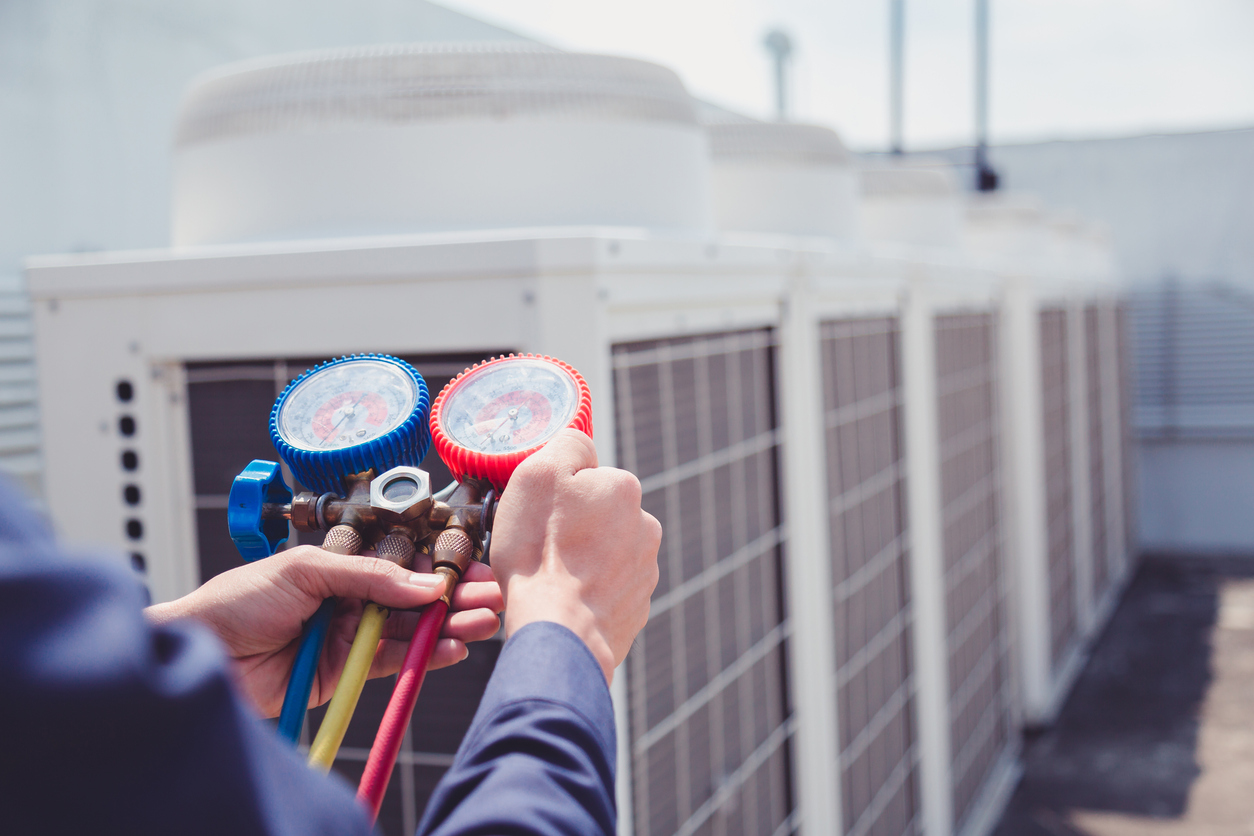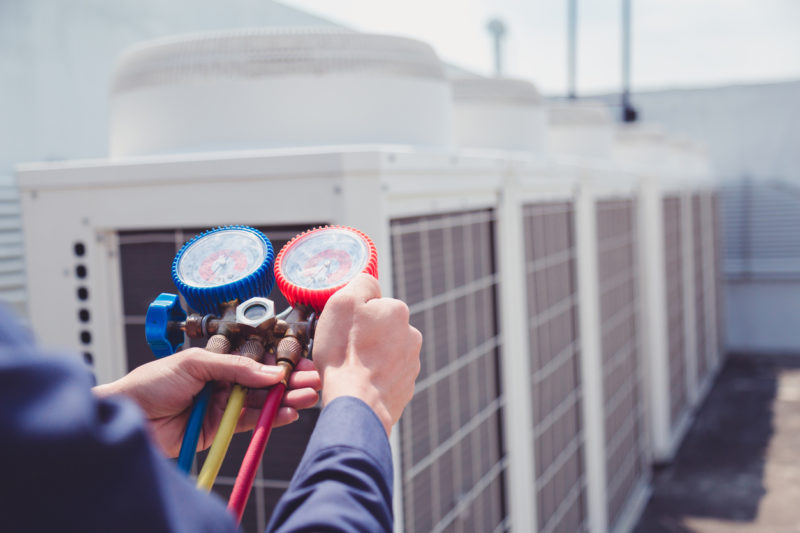When it pertains to creating architectural areas, the old claiming 'form follows function' is true. Yet have you ever before considered how integrating cooling into architecture can boost convenience and efficiency concurrently?
The smooth fusion of cooling down systems within the structure of a building not just influences the owners' health however also influences the total sustainability of the framework. As you explore the intricate connection between layout and air conditioning, a globe of ingenious solutions and advanced innovations awaits your exploration.
Trick Takeaways
- Energy-efficient systems boost comfort and sustainability.
- Integrated cooling enhances indoor air high quality.
- Stabilizing visual appeals and performance makes certain ideal layout.
- Future fads concentrate on clever, sustainable air conditioning services.
Relevance of Integrated Air Conditioning
When developing rooms, integrating a/c is important for making certain the best comfort and performance. Power effectiveness plays an important role in the design procedure, as it not only decreases functional costs yet additionally decreases the ecological impact of the building. By integrating energy-efficient a/c systems, you can create a lasting and cost-efficient remedy that profits both the occupants and the planet.
On top of that, indoor air high quality is another vital aspect to consider when designing with integrated a/c. Appropriate air flow and filtering systems assist preserve a healthy indoor setting by lowering contaminants and allergens. This leads to improved resident health and wellness and efficiency. When picking a/c systems, prioritize those that use innovative purification innovations to enhance the general indoor air top quality.
Factors Affecting Layout Decisions
Incorporating air conditioning right into building layouts needs careful consideration of different factors that affect layout decisions. When integrating cooling systems, sustainability factors to consider are essential to reduce the building's ecological impact. User experience plays a considerable role in identifying the performance and fulfillment with the a/c system.
- Energy Efficiency: Lasting layout techniques intend to decrease energy consumption, which not just profits the atmosphere yet additionally reduces operational costs for the structure owner.
- Indoor Air Quality: Supplying a comfortable and healthy and balanced indoor setting boosts the overall individual experience, advertising efficiency and health.
- Appearances and Integration: Incorporating air conditioning systems perfectly right into the building design makes sure that performance does not compromise the visual charm of the area, enhancing user satisfaction and total structure aesthetics.
Effective Cooling Down Techniques for Structures
To optimize cooling down effectiveness in buildings, consider including passive style strategies alongside air conditioning systems. Passive air conditioning methods can significantly minimize the requirement for mechanical air conditioning, causing more lasting remedies for maintaining comfortable indoor temperatures. Layout attributes such as shielding tools, natural air flow systems, and thermal mass can help manage temperature levels without relying solely on energy-intensive a/c. By tactically putting home windows to optimize cross air flow or using reflective roofing products to lower solar warm gain, you can harness the power of nature to cool your building successfully.
In addition to easy techniques, executing lasting solutions like eco-friendly roof coverings or living wall surfaces can better enhance cooling efficiency by giving insulation and minimizing warmth absorption. These features not just aid in maintaining comfy indoor temperature levels but likewise contribute to a greener setting. By integrating easy cooling methods with lasting options, you can produce an extra energy-efficient and eco-friendly structure layout that focuses on both comfort and preservation.
Balancing Aesthetic Appeals and Capability
Take into consideration the unified combination of aesthetic aspects with practical elements in your architectural style to guarantee a well balanced and impactful end result. When incorporating a/c systems right into your building design, striking a balance between appearances and performance is essential to producing areas that not just look excellent yet also give ideal convenience for occupants.
To accomplish this balance, keep the complying with factors in mind:
- Mix the System with the Surroundings: See to it that the air conditioning devices or vents effortlessly incorporate with the overall visual of the room, whether via concealed positioning, attractive covers, or matching colors.
- Prioritize User Experience: Design the air flow and temperature level control systems in a way that focuses on the convenience and health of the owners. Take into consideration elements such as air distribution, sound levels, and simplicity of usage to boost the overall user experience.
- Incorporate Sustainable Practices: Go with energy-efficient cooling options that not only add to the aesthetic charm of the building yet likewise advertise sustainability and minimize environmental influence.
Future Patterns in Architectural Air Conditioning
As you envision the future of architectural layout, staying abreast of arising cooling fads comes to be critical for improving both kind and feature within your projects.
The combination of wise innovations right into architectural air conditioning systems is set to reinvent the method structures are cooled. These systems utilize data and automation to optimize energy usage, providing individualized comfort while minimizing environmental effect.
Sustainable options are also shaping the future of building cooling. From easy design techniques that make the most of all-natural ventilation to innovative cooling products that lessen the demand for conventional a/c, sustainability is at the leading edge of cooling down advancements. Designers are increasingly integrating eco-friendly roofs, shielding components, and thermal mass into their styles to create more energy-efficient cooling systems.
Frequently Asked Questions
Just How Does Cooling Impact the Overall Sustainability and Power Efficiency of a Building Layout?
When you incorporate air conditioning right into building design, it impacts sustainability and energy effectiveness. Power consumption can rise because of air conditioning use, impacting building effectiveness. This raised energy need can have negative ecological impacts, reducing overall sustainability.
To alleviate these effects, consider incorporating energy-efficient cooling and heating systems, correct insulation, and passive air conditioning strategies. Stabilizing comfort with energy efficiency is essential for producing lasting architectural designs.
Are There Any Type Of Laws or Certifications That Architects Need to Think About When Integrating A/c Into Their Styles?
When integrating air conditioning right into your designs, it's critical to consider regulative requirements like building codes and accreditation criteria for energy effectiveness. Meeting these guidelines warranties that your job aligns with market ideal practices and ecological goals.
Acquainting on your own with these laws will assist you in developing sustainable styles that focus on convenience while likewise minimizing power intake. Keep notified and certified to provide tasks that are both comfortable and environmentally friendly.
Can the Positioning of A/c Units Influence the Overall Comfort and Capability of a Space?
When it concerns air conditioning devices, placement matters a lot for your space's convenience and capability. Air blood circulation is crucial, so avoid obstructing vents or putting systems in dilemmas.
Consider how environmental pollution can impact your atmosphere and go for an aesthetically pleasing configuration that blends flawlessly with your spatial format.
Pay attention to where you position these devices to assure optimum comfort and effectiveness throughout your space.
What Are Some Cutting-edge Technologies or Products That Can Be Made Use Of to Improve Cooling Systems in Modern Architecture?
To improve cooling systems in contemporary design, you can discover clever controls and sustainable products. Easy cooling strategies and using thermal mass are cutting-edge ways to boost efficiency and comfort.
Just How Can Architects Ensure That the Layout of Air Conditioning Equipments Matches the General Aesthetic of a Building While Still Focusing On Capability and Convenience?
To ensure the design of air conditioning systems complements a building's visual, prioritize aesthetic combination and style harmony. Integrate energy-efficient modern technologies for capability. Balancing appearances and functionality enhances owner convenience.
Stress smooth integration of a/c aspects right into the building layout. By concentrating on both visual appeals and power performance, architects can create an area that's visually attractive, comfy, and eco-friendly.
Final thought


Generally, when designing with comfort in mind, incorporating cooling in design is important. By taking into consideration variables such as effective air conditioning approaches, balancing looks and capability, and remaining ahead of future trends, designers can develop spaces that aren't only visually enticing yet likewise comfy for occupants.
It is very important to focus on the wellness and convenience of those who'll be using the area, and incorporated cooling plays a crucial role in accomplishing this objective. https://norburyacinstallation.co.uk
